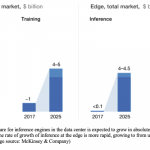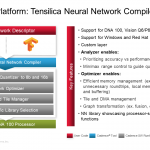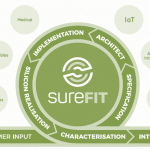You are currently viewing SemiWiki as a guest which gives you limited access to the site. To view blog comments and experience other SemiWiki features you must be a registered member. Registration is fast, simple, and absolutely free so please,
join our community today!
WP_Term Object
(
[term_id] => 178
[name] => IP
[slug] => ip
[term_group] => 0
[term_taxonomy_id] => 178
[taxonomy] => category
[description] => Semiconductor Intellectual Property
[parent] => 0
[count] => 1925
[filter] => raw
[cat_ID] => 178
[category_count] => 1925
[category_description] => Semiconductor Intellectual Property
[cat_name] => IP
[category_nicename] => ip
[category_parent] => 0
[is_post] =>
)
Workshops Coming to Istanbul, Amman, Cairo and Abu Dhabi
SiFive is continuing its tour through the Middle East with highly educational RISC-V Tech Symposiums and Workshops in the key locations of Istanbul, Amman and Cairo. These cities are some of the most technologically advanced in the region, and we are eager to collaborate… Read More
We all know that cars are using processors for many tasks, but it is easy to fail to comprehend just how many there are in a typical modern car. Browsing through the Infineon AURIX automotive processor application guide, you can start to see just how pervasive processors are. The AURIX processors are specifically designed for automotive… Read More
Caching intent largely hasn’t changed since we started using the concept – to reduce average latency in memory accesses and to reduce average power consumption in off-chip reads and writes. The architecture started out simple enough, a small memory close to a processor, holding most-recently accessed instructions and data … Read More
In the old days, product architects would throw a functional block diagram “over the wall” to the design team, who would plan the physical implementation, analyze the timing of estimated critical paths, and forecast the signal switching activity on representative benchmarks. A common reply back to the architects was, “We’ve… Read More
You know that AI can now look at an image and detect significant objects like a pedestrian or a nearby car. But had you thought about a need for corrective lenses or other vision aids? Does AI vision decay over time, like ours, so that it needs increasing help to read prescription labels and identify road signs at a distance?
In fact no.… Read More
Synopsys just announced the availability of their IP solution supporting CXL (Compute Express Link). This new protocol is going to be an important component for several applications expected to be shipping starting in 2021. CXL is an alternate protocol that runs on the same physical layer as PCI Express (PCIe). Among other usages,… Read More
If you follow my blogs you know that Arteris IP is very active in these areas, leveraging their central value in network-on-chip (NoC) architectures. Kurt Shuler has put together a front-to-back white-paper to walk you through the essentials of AI, particularly machine learning (ML) and its application for example in cars.
He… Read More
There’s no question that the RISC-V ISA is revolutionizing the semiconductor ecosystem around the world. We see Israel as the epicenter of RISC-V based development and innovation in the Middle East. For the second year in a row, SiFive will be hosting its Tech Symposium on RISC-V in Israel to help foster the growth and momentum that’s… Read More
I recently wrote about Tensilica’s HiFi DSPs which played a significant role at Cadence’s Automotive Design Summit which was held on the Cadence San Jose campus at the end of July. That article focused on infotainment while briefly touching on Advanced Driver-Assistance Systems (ADAS). ADAS is NOT synonymous with autopilot.… Read More
I have heard many times before that low power and mixed-signal design is more Art than Science. I believe this is a misconception. Science is a field that builds upon previous experiences and discoveries. Art primarily seeks out creative differences, things we have not seen before that evoke emotion. The most successful designers… Read More












AI RTL Generation versus AI RTL Verification